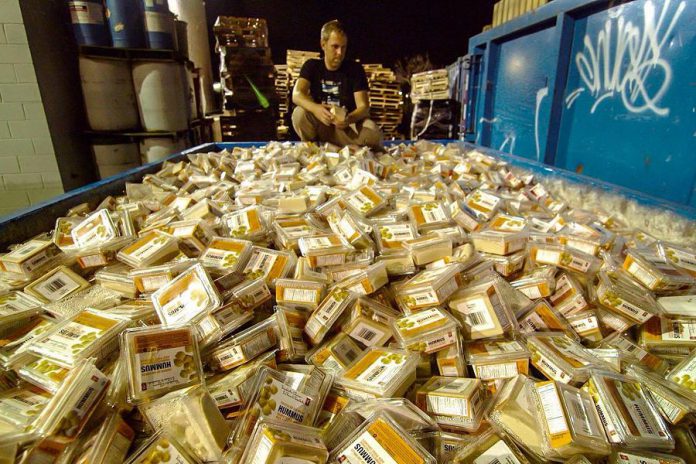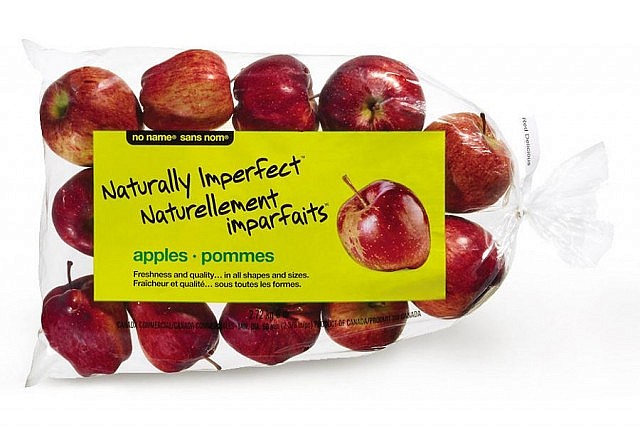
I like to consider myself a thrifty grocery shopper. When it comes to buying produce, the clearance rack is usually my first stop in the store. A relatively recent example of the value of choosing the produce that’s on way out the door came late last summer.
Wanting to make salsa for the first time, the recipe I was using called for six pounds of tomatoes. Sadly, my backyard crop did especially bad last year and the plants bore no fruit. Missing the farmers’ market, my last resort was the grocery store. I was in luck, as the stainless steel cart which holds the discounted produce was overflowing with tomatoes and peppers.
A little soft or suffering from a bump or bruise, the veggies were in otherwise terrific shape. The total cost for six pounds of tomatoes and the required amount of peppers I needed came to under $10.
Most of that produce would have been tossed in the garbage at the end of the day — had I not swooped in and saved it.
Food waste is a real issue in Canada, and goes beyond vegetables and fruit that suffer from bruising or have reached the end of their shelf life. Increasingly, our society chooses not to buy or eat vegetables and fruit that don’t look the way we’ve been taught they should. Kids grow up being thinking that carrots should look like orange triangles, when in fact, it’s not uncommon to see a wide variety of oddly shaped carrots. It’s these carrots that get picked over and go to waste.
A report released by Value Chain Management International pegged Canada’s annual food waste at a staggering $31 billion in 2014. That’s an increase of 15% from the year prior. Looking at it from a global perspective, a third of all the food we produce — 1.3 billion tonnes — is wasted, according to a 2013 United Nations report. This waste is happening at the same time 1.2 billion people around the globe are living in extreme poverty and starving. We need to do better.
Just Eat It: A Food Waste Story
Last week, grocery giant Loblaw Company announced they were going to tackle the problem of food waste with a new program being offered in their No Frills, Real Canadian Superstore and Maxi locations. Called “Naturally Imperfect”, the company is going to begin carrying produce that is smaller, contains blemishes, or is oddly shaped. These fruits and vegetables would not ordinarily appear in stores.
“We often focus too much on the look of produce rather than the taste,” says Ian Gordon, senior vice president, Loblaw Brands, Loblaw Companies Limited. “Once you peel or cut an apple, you can’t tell it once had a blemish or was misshapen. No name Naturally Imperfect is a great example of Loblaw and our vendors coming together to find an innovative way to bring nutritious food options to consumers at a great price.”
Produce involved in the no name Naturally Imperfect program was previously used in juices, sauces, or soups, or may not have been harvested due to its small size. With this program, Loblaw Companies is working to ensure farmers have a market for smaller, misshapen fruit ensuring it does not go to waste.

Similarly, 1.4 billion hectares of land, 28 per cent of the world’s agricultural area, is used annually to produce food that is lost or wasted.
How can you reduce food waste in your own home? There are plenty of ways to start.
- Shop smart. Use grocery lists and avoid impulse buys. Have a plan for perishable items like produce and dairy and know how you’ll use it.
- Buy manageable quantities. If a recipe calls for two carrots, only buy two and not a large bag.
- Buy the produce no one else wants. If you see an oddly shaped fruit or vegetable, buy it instead of the “perfect” ones. It’ll taste the same, and won’t end up in the garbage.
- Practice FIFO. There’s a term in the grocery industry called FIFO, or first in, first out. When restocking your fridge, move older items to the front and new items to the back, ensuring the older items are used before they go bad.
Reducing the amount of food waste is not only good from an economic standpoint and will help the household grocery budget, but from an environmental perspective as well. Plus, it just makes sense to not see so much perfectly good food be wasted.
We all need to our part to reduce the amount of food being thrown out.


























